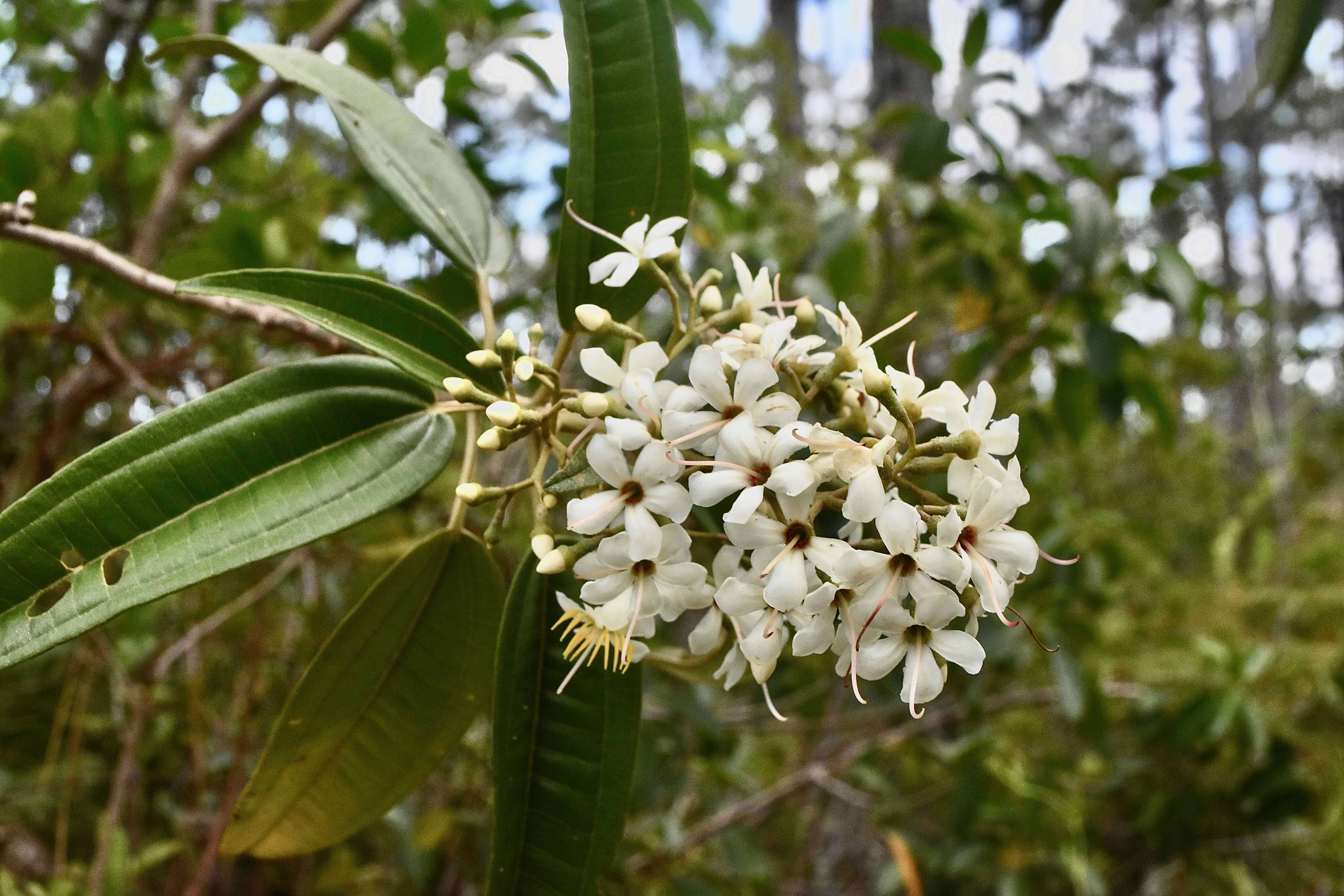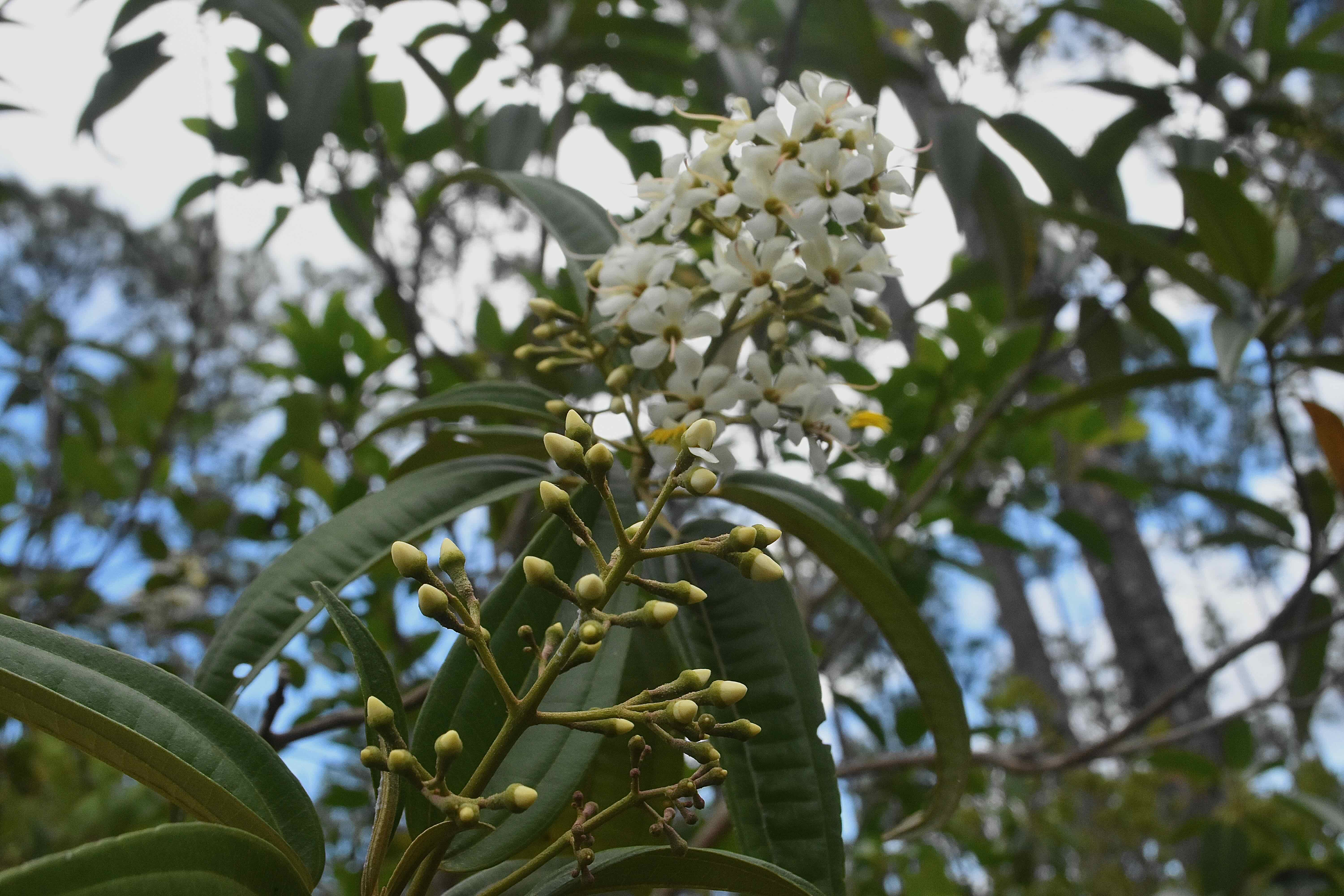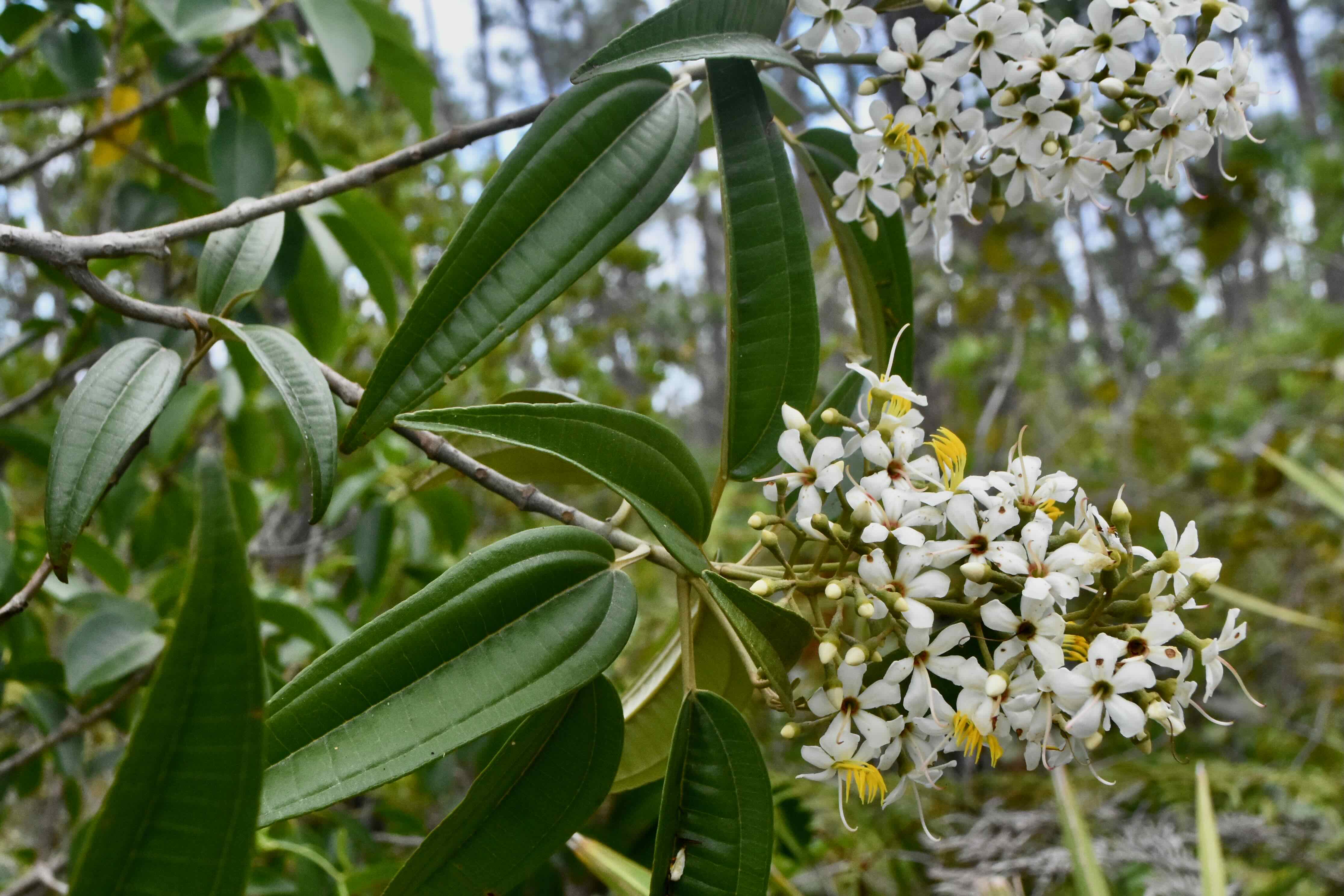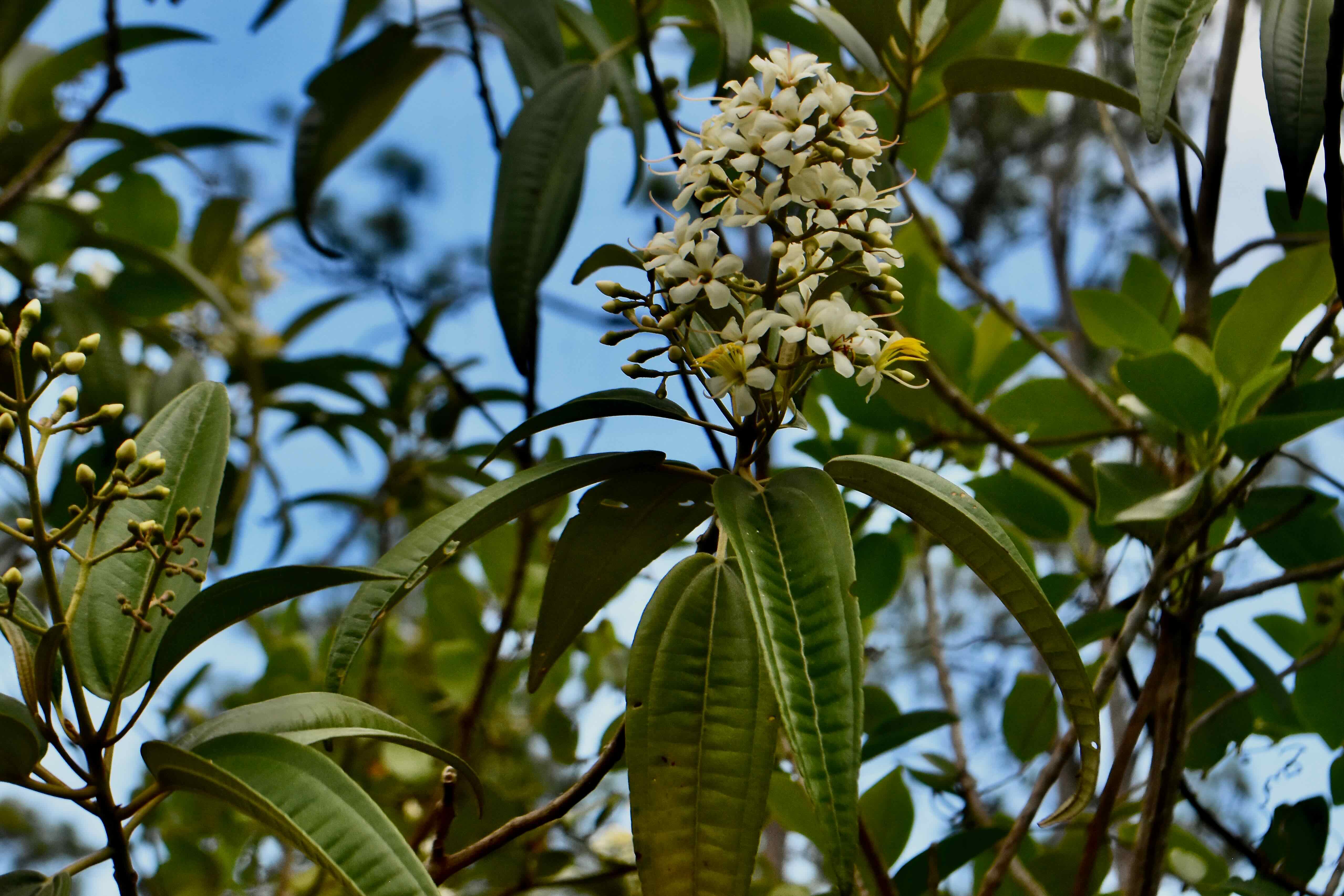
West Indian lilac, photographed in Everglades National Park, Homestead, Miami-Dade County, in May 2025.
There is no shortage of Florida native plants we humans have used in landscaping. The royal palm is the first to come to mind. Myrsine, wild coffee, cocoplum and West Indian mahogany figure prominently on this list. Gumbo limbo, Walter’s viburnum, sabal palm, satin leaf … we could go on and on.
One you probably haven’t heard of, but probably should, is West Indian lilac, Tetrazygia bicolor. It is absolutely gorgeous when in bloom and when not in bloom. But for reasons not known to us, you’d be hard-pressed to find it for sale beyond a few nurseries that specialize in Florida natives.
If you’re from parts north of Florida, you might be familiar a variety of lilac species commonly grown for their large clusters of flowers. This is not it. Not even the same family. As one might guess from the name, West Indian lilac is more of a tropical plant.
It is found throughout the Caribbean, and Florida is the northernmost point of its natural range. In Florida, it’s only found in the pine-rockland habitat of Miami-Dade County. Long Pine Key of Everglades National Park is the best place to find, and where we found the plants on this page.
West Indian lilac is rare enough that the state has listed it as threatened and the Institute for Regional Conservation has it at critically imperiled. However, it can be abundant in places where it’s found. The Florida Natural Areas Inventory classifies West Indian lilac as apparently secure.
West Indian lilac is a tall shrub or short tree, typically growing between 10 and 30 feet tall and with a spread of four to 10 feet. It can, on occasion, hit a respectable 40 feet in the air. It is multi-stemmed but can be trained to a single stem or trunk when used in landscaping.
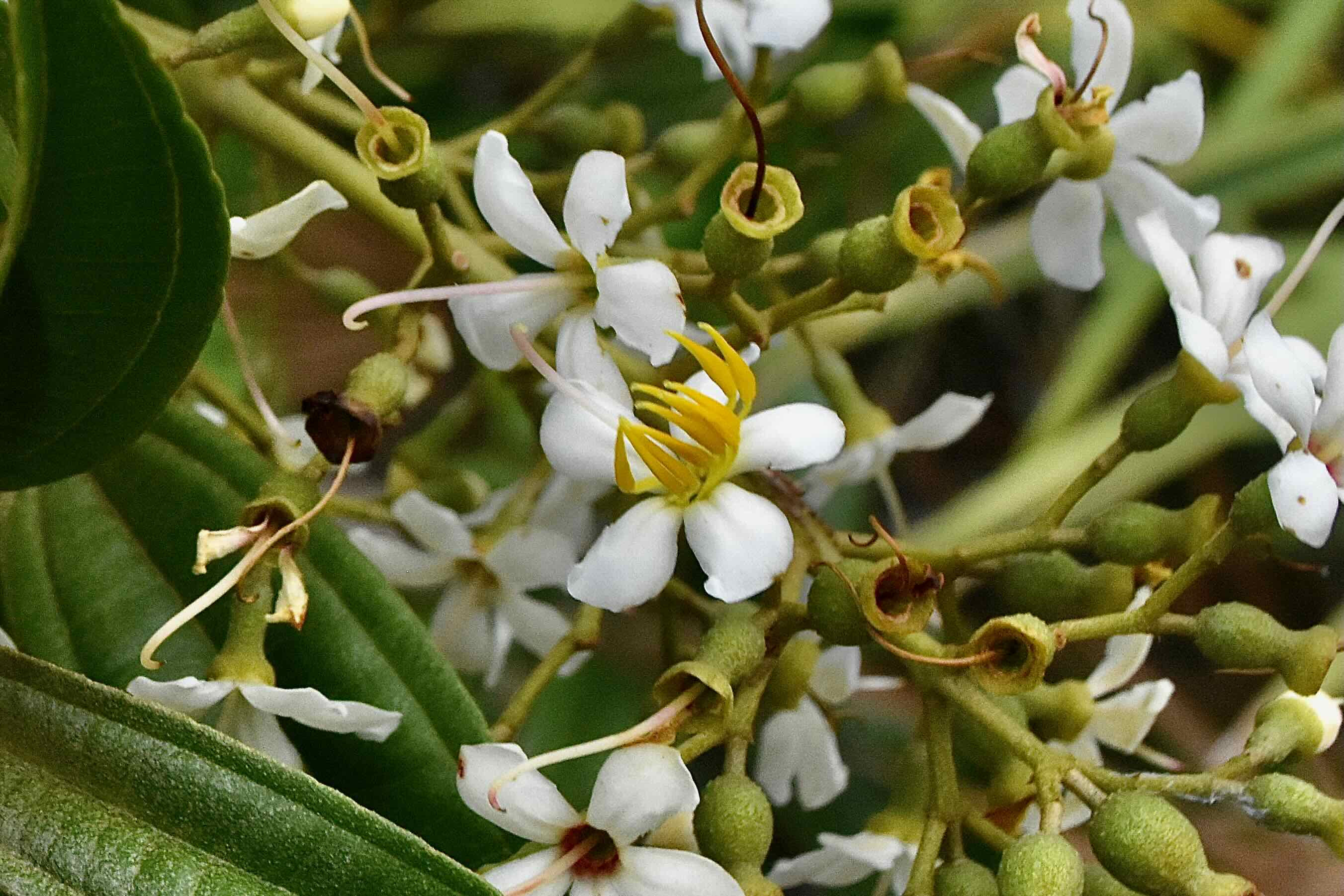
Its large, terminal clusters of flowers will catch your eye when in bloom. Individually, they’re small, cream-white or white with a pink tinge, dark red center and prominent yellow stamen that remind us of luscious, drooping eyelashes. It’s those stamen that hint to which family West Indian lilac belongs. Blooming season is April through August.
The flowers give way to small green berries that turn a blackish-purple when ripe. They attract birds, but they’re not only edible for us humans, they actually taste good.
Leaves are dark green above, silvery green below, arranged opposite each other along the stem; they’re lance-shaped, between four and eight inches long, with prominent veins running parallel to each other the length of each leaf. The edges, or margins, are entire, meaning smooth — no serrations or lobes. The bark is gray to brown and rough.
West Indian lilac grows best in places with part-shade but will take to full sun as well. It is somewhat drought tolerant, but a freeze could kill it. It is a perennial.
As we started off, West Indian lilac is a shrub/small tree with plenty of potential as a landscaping plant. It can be used as a specimen plant, as a hedge, border or foundation planting. The Institute for Regional Conservation recommends that West Indian lilac for use in southern to central Miami-Dade County, roughly areas that would correspond to its natural range. The University of Florida Extension Service says it can be grown within USDA zones 10 and 11, which extends into southern St. Lucie County on the east coast and Charlotte County on the west.
West Indian lilac is also commonly known as Florida tetrazygia, Florida clover ash and Spanish leather. We’ve also seen Miconia bicolor used as its binomial, or scientific, name, though the Integrated Taxonomic Information System says T miconia is the accepted name.
It is a member of Melastomataceae, the meadowbeauty family. Compare the flowers, particularly the stamen and you see the family resemblance.
Everglades National Park

